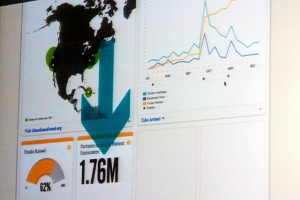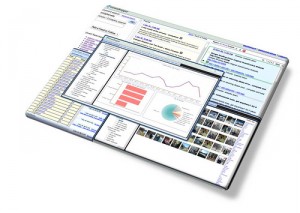Note: This is more of a personal post and a bit of a departure from what I normally write here. This is a continuation of my year in review post of 2009 (alright I skipped a year…) and perhaps something that’s important for me to do as just a personal exercise more than anything else.
So my life in 2011, looking at it as a whole I can’t really make a judgement on whether it was a good or bad year. It had some positive aspects and some negative aspects. I guess I can say that it’s been a year of growth and personal understanding more than anything else.Ending off from 2010 I came in from a point of uncertainty. I didn’t end the year off with a bam … maybe more so a little bit of a whimper so coming into 2011 I didn’t know where I was going. I think I’ve been fortunate enough that moving forward from that rough patch others saw particular talents and set me on a course for personal success (hat tip to those involved).
Moving forward with this shift in focus I would say that 2011 became more so about learning the business of social than just being elbows deep in data. While previously I was doing a lot of behind the scenes analytics work I started to see the whole picture. I dealt with client, client/project managers and whomever else was along the way in delivering the end project. While 2010 was very much the year of ‘the quant’ where I learned quantitative analysis and technologies, 2011 was the year of ‘the business man’ for learning client needs and what it would take to properly deliver them.
This past year I think I also came out of my shell a bit and took some risks. Something I pat myself on the back for is signing up for a mixed martial arts gym. Going in I was anxious as hell. This was something I didn’t know the first thing about and I felt out of my element. I had a bit of experience with Kick Boxing so striking I nervously did but being involved in the first few times of grappling classes (where the goal is taking down and pinning the other person) I felt like I was going to break myself. What was the result in the end? I stuck it out, had a lot of fun and continued going to classes. While I haven’t been going as much as I’d like to, my goal for 2012 (or early 2013) is to get my white level shorts demonstrating my seriousness to learning about the sport.

OK so this was a Halloween picture (and I never get bloody) but this is me in my MMA wraps. Picture credit: @vivve
Additionally I think I brought something out of myself that I had a feeling for but with the proper actions it became much more evident. After hitting a few work projects “out of the park” an opportunity came up where while I was considered a junior for, with the support of people I respected I dived into. Without going into massive detail, my task was to put together a presentation with my own discretion for direction in what became a one night marathon session. The end result was a bit rough in presentation style and content but overall came out solidly and became something I was proud of. It demonstrated skills I didn’t normally get to exercise and showed an area for personal growth which I enjoyed but had not kept on my radar until recently.
Positivity unfortunately comes with negative aspects and at times this year I had some ‘bumpy’ parts. One of the things I look back on for this year that I didn’t follow through with as part of my goals from 2010 is the building and maintaining of relationships. Especially when things got less than ideal I did find myself less likely to reach out to people or be as socially active as I normally have been. Note to friends: if you’re feeling like I haven’t been in contact with you in a long time feel free to ping me and call me out on it!

My attempt at Movember. While it was an awesome mustache, without superior campaign implementation (something I potentially could have done) I would have fund-raised a lot more for the cause.
When times in life got rough I also regretted that I sometimes didn’t stick to my guns and instead became more passive. Staying true to your values has always been something I’ve respected of people around me. I feel it says something about your strength of character and presents true leadership abilities. Anyone with some knowledge of political history knows that the truly memorable leaders were those who held what they valued close to their hearts (Trudeau is one of my idols). I really felt like I reverted back to old habits and let things pass over me with just a whimper rather than speak out about things. I definitely need to take note that this is not where I want to let things go to moving forward.
A year consists of 365 days so while my post is long it definitely didn’t cover everything, like how my weight ballooned a bit… *sigh* As I’m getting older I’m finding while things don’t immediately seem to match together, looking back at things as a whole events seem to somehow become pieced together and make more sense. This year I feel I got a bit deeper of an understanding of myself and knowledge of changes I hope to put in place in regards to what I do and how I operate. While some predict 2012 as the ‘end of the world’ my prediction is that 2012 is a year where things get serious and more so where we’re going to see people jump into action.


